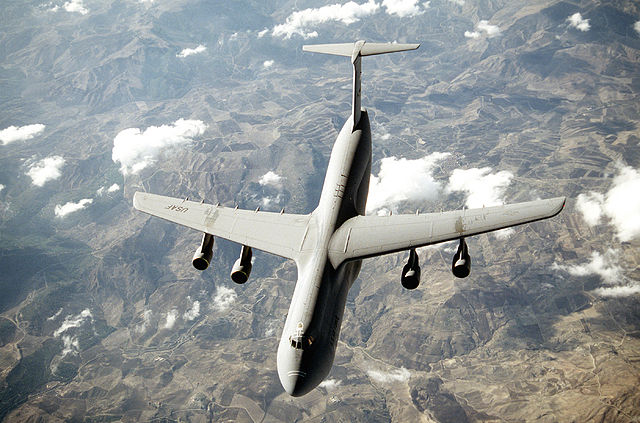[post_page_title]Lockheed C-5 Galaxy[/post_page_title]
This is one of the largest military planes in the world that’s still in use – and it’s one of the most modern on our list, despite hailing from the late 1960s. Its first ever flight was in 1968 but was only first operated a year later in December 1969. It wasn’t all smooth sailing, or flying, for the C-5A as it suffered from some technical and financial problems such as wings cracking. There were 81 aircraft in total that were produced and delivered. Some of the technical problems included cracks that were found on the wings which caused for cargo weigh limitation.

This transport aircraft is used primarily by the United States Air Force, although there are 131 in circulation around the world. Back in 1998 these cost a whopping $152.8 million to make, but the newest versions now cost less than $90 million.
